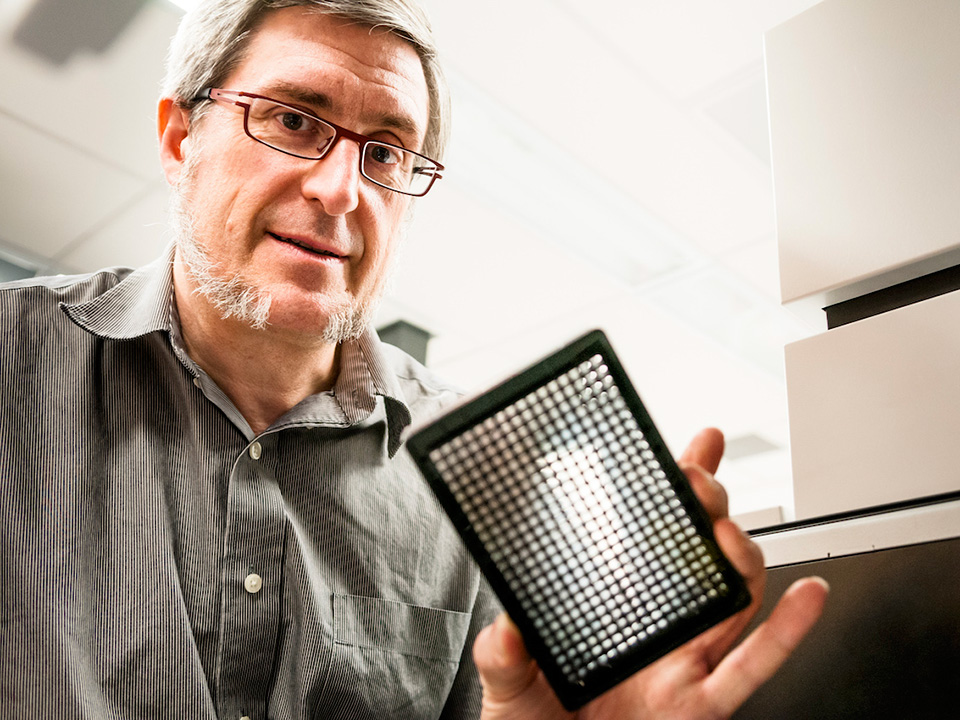Seeing things
By Alisa Kim
2013 is off to a good start for Dr. David Andrews, director of Biological Sciences at Sunnybrook Research Institute. The Canada Foundation for Innovation (CFI) has awarded him $2,469,665 through its Leading Edge Fund (LEF).
"Research and innovation is a forceful driver of growth in our communities. Today's funding will allow a talented group of researchers and students to create the solutions, products and ideas Canada needs to prosper," said CFI president and CEO Dr. Gilles Patry.
The award builds on prior investment by the CFI and the Ontario government that enabled Andrews to build a state-of-the-art cell imaging and analysis facility.
Its centrepiece is the FLIM-Opera, one of the most advanced high-content screening instruments in the world. The acronym FLIM stands for fluorescence lifetime imaging microscopy. The FLIM-Opera, which Andrews helped develop with industry, is a fully automated microscope that shows how long a molecule tagged with a fluorescent dye is excited when hit by light. It can take 100,000 pictures a day on its own. This tool allows him to study the responses of cells to small molecules and genetically induced changes in the proteins made by the cells. It is of particular interest to drug companies because it provides biochemical data that show whether a drug is working and, if so, how it works.
The LEF award will enable Andrews to enhance the high-content screening capability of the Opera and further his research on identifying and validating new therapeutic targets in cells, animals and humans. The research has applications for the treatment of cancer and vascular diseases like heart disease, stroke and dementia.
He will buy a library of lentiviral vectors (a tool used to deliver genetic material into cells), to knock out the expression of selected human and mouse genes and study the effect of the removal of those genes on cell physiology.
"We will selectively turn off families of genes involved in or linked to the specific process we want to study-in my case, the response of cells to chemotherapy," Andrews says. "We'll be able to 'see' the specific interactions of proteins in the cell that regulate programmed cell death, which is how cancer cells usually die in response to chemotherapy."
The award will also support his work on the development of a new high-content screening microscope, one that will provide higher resolution and more information-rich images of what happens in a cell when a gene is selectively turned off. "To 'see' the interactions between proteins in live cells we are going to build a new microscope that we plan to commercialize," he says.
Building this instrument will advance Andrews' commercialization activities with Ontario- and Quebec-based private sector partners, who are also investing in the project.
The Canada Foundation for Innovation funded 75 projects at 34 institutions in this latest LEF competition, for a total investment of $215,801,589.



